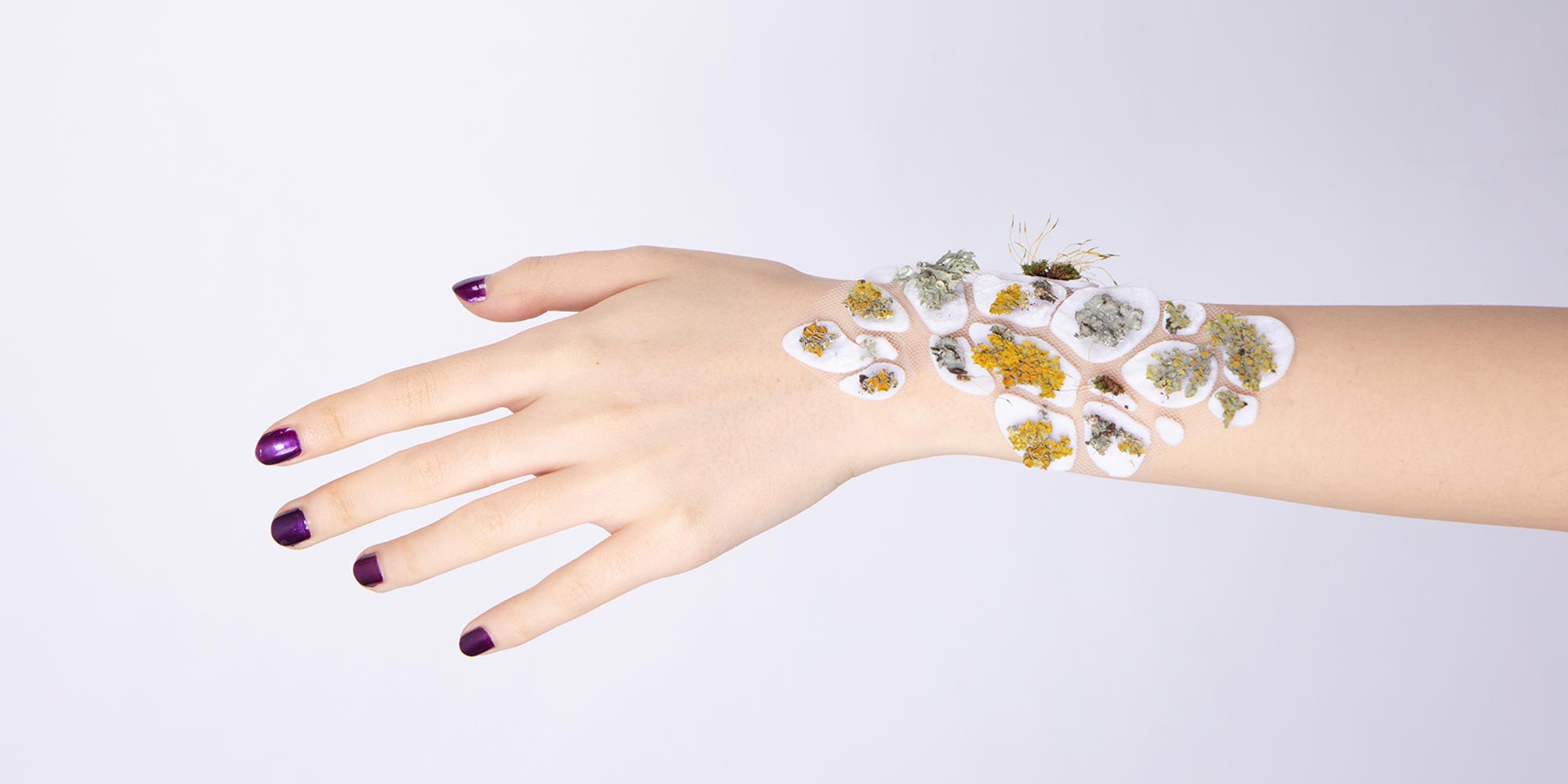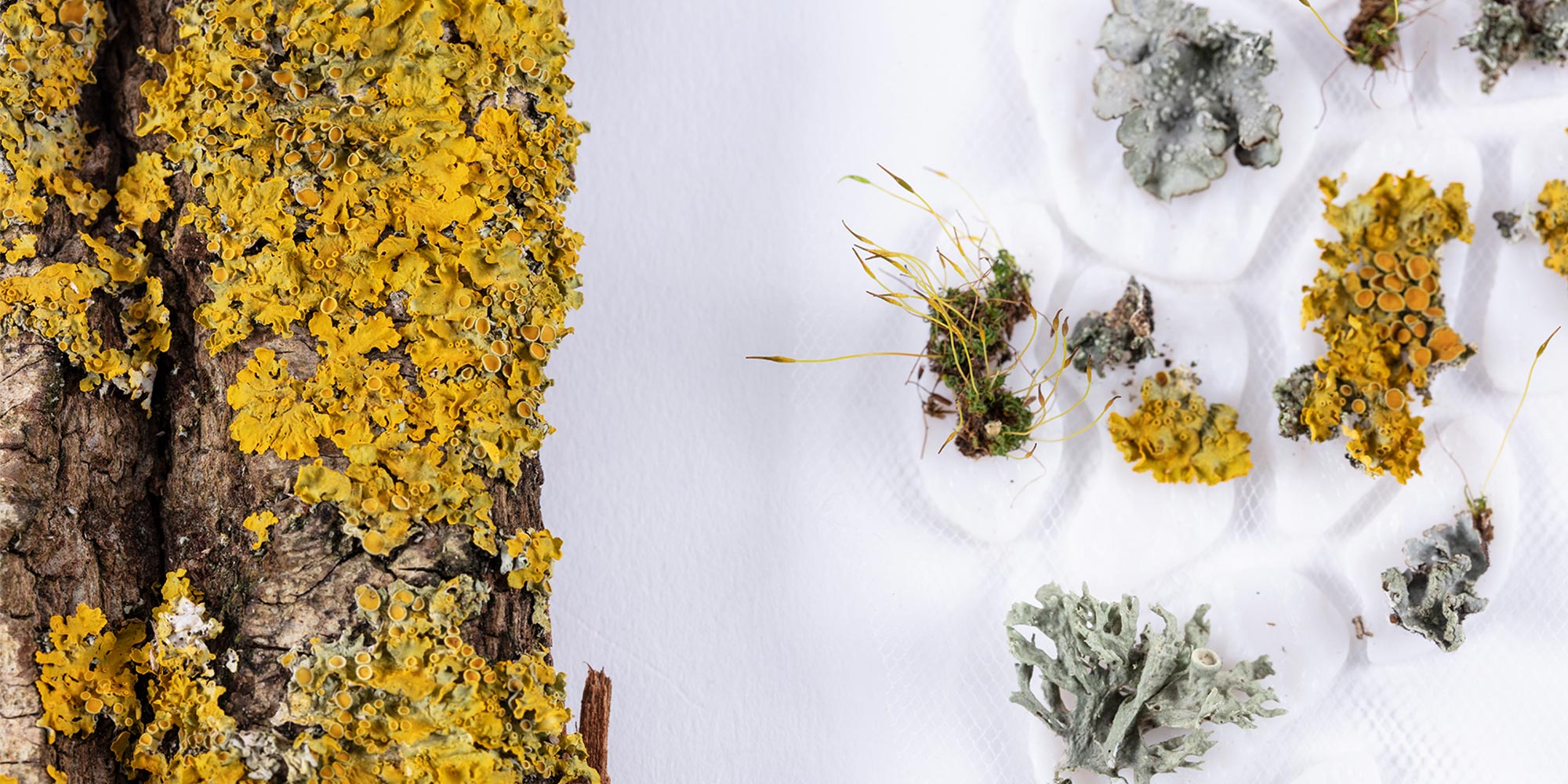Honorary Mention
What if humans can be the medium of nature? What if humans can also provide ecological services? Project Habitate is a provocation that challenges the anthropocentric perspective of ecological values and cultivates kinship between human and nonhuman organisms. We designed a living wearable that enables people to become the hosts for endangered organisms, which in return gives them a sense of companionship and belonging, advocating a new concept of participatory conservation.
The background of the project is ash dieback, a disease that is eradicating the majority of the ash tree population in Europe. Fortunately, the ash won’t be gone forever, but the new population will take decades to grow. In the intervening years, hundreds of species of moss, lichen, and fungi that depend on the ash are losing their habitat and risk secondary extinction.
Traditional conservation methods for these unassuming species can’t cope with this scale of habitat loss. To thrive and reproduce, the species need a specialised habitat and access to a diverse population, normally provided by a forest.
Our material mimics the ash tree’s bark texture, light level, porosity, and pH and leverages human movement to support guest species’ spore dispersal. The wearable provides a temporary home for these tiny species and allows us to play an active role in maintaining biodiversity and breaking the cycle of conservation and destruction by creating a pattern of human-nature coexistence.
In an era of social distancing, this living wearable can be a vibrant indicator of ecological-social connectivity, reminding us that no species is an island.

Credits
Artists: Yuning Chan, Yishan Qin, Tom Hartley
With support from: Royal College of Art, Imperial College London, The James Hutton Institute, Robert Koch Institute, The Millennium Wood
Yuning Chan (CN) comes from an environmental science background and has always been driven by working with nature. She sees design as a powerful tool to influence how people perceive and interact with their environment. She is very much inspired by kin-centric ecology and flat ontology. Her main interest lies in using design fiction to expand imaginations of human-nature coexistences.
Tom Hartley (GB) is an innovation designer with a drive to tackle complex issues in meaningful and creative ways. His background in Electronic and Information Engineering has lent him deep understanding of the technologies that underpin our lives. This is complemented by a keen familiarity with the design process, gained during his masters degree at the Royal College of Art.
Yishan Qin (CN). Starting with product design in her bachelor’s degree, Yishan then dived into Innovation Design Engineering at the Royal College of Art and Imperial College London. At the same time, she has been pursuing her exploration of UX design and fine art. Yishan really enjoys merging insights from scientific contexts into creative solutions with a can–do mind and curiosity.
Jury Statement
When we are talking about the Anthropocene with its destruction of the biosphere, then we imagine large mammals, whales or the Amazon forest. What is missing in our cultural imagery of nature, is the barely visible, in case of trees the profane: mosses, lichen, and fungi. In Project Habitate, the artists have created scientifically proven wearables which are ready to be accepted by mosses, lichen, and fungi. The wearer would be enabled to replace a tree as host. The original host is the ash tree: the jewelry mimics the ash tree’s bark texture, light level, porosity, and pH and leverages human movement to support guest species’ spore dispersal. The living wearable can be seen as an indicator of ecological-social connectivity, as a reminder that no species is an island. From the STARTS perspective, Project Habitate provides scientifically sound ideas on how the destructive aspects of the Anthropocene can be countered through the creation and application of materials that can serve as habitats for neglected species.



